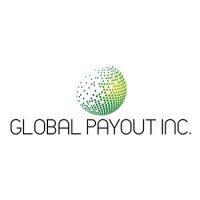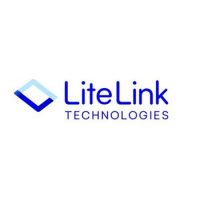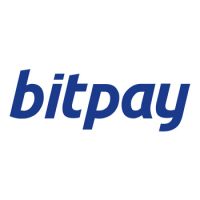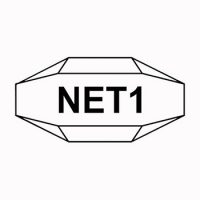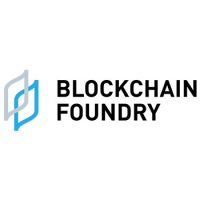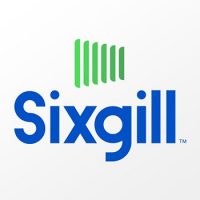Blockchain
NETSOL Technologies Reports Fiscal Second Quarter 2020 Financial Results
Sequential Topline Growth of 16% Drives Profitable Quarter with $0.05 Earnings Per Share
Company Advances Three-Pronged Growth Strategy: Alternative Subscription Option Leads to Bolstered Pipeline; Advanced Discussions with Potential for New Engagements Through Otoz; Continued Progress and Technological Advancements in Innovation Lab
CALABASAS, Calif., Feb. 12, 2020 (GLOBE NEWSWIRE) — NETSOL Technologies, Inc. (Nasdaq: NTWK), a global business services and enterprise application solutions provider, reported results for the fiscal second quarter ended December 31, 2019.
Fiscal Second Quarter 2020 and Recent Operational Highlights
- Regarding previously announced 12-country, $110 million contract with German auto manufacturing giant, the Company made continued progress with respect to additional NFS Ascent® implementations and anticipates Go Live events in the coming months for the following countries: Singapore, Malaysia, and Thailand.
- As part of the above-referenced contract, achieved a successful Go Live in Hong Kong with the NFS Ascent® Retail Platform, consisting of Omni Point of Sale (Omni POS) and Contract Management System (CMS).
- Introduced Software-as-a-Service (SaaS) subscription-based pricing for new and existing customers as an alternative to the traditional license model, which is now available for all cloud-based NETSOL products and services globally, including NETSOL’s flagship offering NFS Ascent®.
- NETSOL North America secured a contract with SCI Lease Corp, a Canadian-based national automotive leasing company, for its Contract Management System (CMS) on the cloud, representing the first SaaS-based agreement for Ascent in this region.
- Announced the official Go-Live with mCollector application for a top tier multi-finance company in Indonesia, as part of a larger contract originally signed in 2018.
- Made significant progress towards the deployment of NFS Ascent® Retail Platform for a New Zealand-based captive equipment finance company.
- Made significant progress towards the deployment of NFS Ascent® Wholesale Platform for a U.K.-based leading auction house.
- Generated additional $2.0 million by providing additional services for various customers across multiple regions.
- Appointed industry veteran Chris Mobley as the new Head of NFS Ascent® Wholesale operations in Europe with the goal of leading the rollout of NETSOL’s new, subscription-based pricing strategy, orchestrating the company’s European-focused growth plans and leading pre-sales of the company’s Wholesale operations globally.
- Made further advancements in certain Otoz Innovation Lab initiatives, leading to multiple discussions, demonstrations, and potential engagements with a several tier one customers in the U.S. and Asia Pacific (APAC) regions.
- Announced NETSOL’s “Cloud Readiness” campaign during the 20th anniversary of the company’s listing on Nasdaq as part of its participation at the closing bell ceremony in late January.
Fiscal Second Quarter 2020 Financial Results
Total net revenues for the second quarter of fiscal 2020 were $15.7 million, compared with $17.0 million in the prior year period. The decrease in total net revenues was primarily due to a decrease in total license fees of $4.4 million, which was offset by an increase in services revenues of $1.8 million and an increase in total maintenance fees of $1.3 million.
- Total license fees were $384,000, compared with $4.8 million in the prior year period.
- Total maintenance fees were $5.0 million, compared with $3.7 million in the prior year period.
- Total services revenues were $10.3 million, compared with $8.5 million in the prior year period.
Gross profit for the second quarter of fiscal 2020 was $7.8 million (or 49.7% of net revenues), compared to $8.9 million (or 52.1% of net revenues) in the second quarter of fiscal 2019. The decreases in gross profit and gross profit as a percentage of revenue were primarily due to decreases in revenue by an amount that was greater than the related decreases in cost of revenues, respectively. The decrease in cost of revenues was predominantly driven by decreases in travel, depreciation and amortization and other expenses, which were offset by an increase in salaries and consultants’ costs.
Operating expenses for the second quarter of fiscal 2020 increased 6.4% to $7.1 million (or 45.2% of net revenues) from $6.7 million (or 39.2% of net revenues) in the second quarter of fiscal 2019. The increase in operating expenses was primarily due to increases in general and administrative expenses, which were offset by decreases in sales and marketing expenses, salaries and wages, and professional services.
GAAP net income attributable to NETSOL for the second quarter of fiscal 2020 totaled $586,000 or $0.05 per diluted share, compared with GAAP net income of $2.9 million or $0.25 per diluted share in the second quarter of fiscal 2019. GAAP net income attributable to NETSOL included a $61,000 gain on foreign currency exchange transactions in the second quarter of fiscal 2020, which was a significant decrease compared with a gain of $2.5 million in the prior year period.
Non-GAAP adjusted EBITDA for the second quarter of fiscal 2020 totaled $1.6 million or $0.13 per diluted share, compared with non-GAAP adjusted EBITDA of $4.1 million or $0.35 per diluted share in the second quarter of fiscal 2019 (see note regarding “Use of Non-GAAP Financial Measures,” below for further discussion of this non-GAAP measure).
At December 31, 2019, cash and cash equivalents were $22.1 million, an increase from $20.3 million at the end of the prior year quarter.
Management Commentary
“The fiscal second quarter was a positive step forward for our business as we continue to position NETSOL for its next phase of growth in the years ahead,” said company Co-Founder, Chairman and Chief Executive Officer Najeeb Ghauri. “The 16% sequential improvement in our topline was the result of ongoing and significant implementation work within our core business, which also included an additional $2.0 million in change requests, yet another favorable data point that underlies the ongoing industry shift to more complex deployments. While our year-to-date results reflect our ongoing efforts to transition NETSOL towards a more diversified revenue mix, in Q2 we maintained our commitment to financial prudence, most notably evidenced in our return to profitability during the period.
“Operationally, we began the initial application of our three-pronged growth strategy, which has yielded already-favorable results. More specifically, in November we closed our first official sale of NFS Ascent® in North America, which also represented the first SaaS-based agreement for Ascent in this region. Additionally, our mobility-focused work within our Otoz Innovation Lab has garnered serious attention from potential and existing customers alike, which we expect to materialize in increased demos, more advanced development discussions, and even pilot projects in the coming months. Looking to the second half of the year, with our current pipeline as well as ongoing major rollouts with existing customers, we have strong visibility to reaffirm our expectations for sequential improvement throughout the balance of fiscal 2020.”
Sales Outlook
NETSOL President, Global Sales and Otoz CEO Naeem Ghauri added: “While we are continuing to sell add-on services and more licenses for existing contracts, we’re also now generating new opportunities at an increasing rate for our subscription pricing, or SaaS, model. While it remains early days, we are encouraged by the strong initial interest we’ve seen and believe our decision to diversify our offerings beyond the traditional license sales will lead to long-term, predictable revenue growth. Going forward, we have visibility into a growing pipeline within all three of our geographic regions, which we anticipate to result in sequentially improved results in the second half 2020. Further out, we’re working towards an eventual inflection point where annual recurring revenues, or ARR, can supplant our current license revenues and provide sustained profitability.”
Otoz Update
“We are actively discussing various partnerships and collaborations with several tier one customers to launch Otoz as a premium, white-labeled, shared mobility platform and believe we are close to announcing official agreements soon,” continued Ghauri. “While we continue to build out the platform according to our predefined product roadmap, interest in the platform is tracking ahead of internal targets and forecasts, which has us ramping up efforts to meet demand. We look forward to providing more updates on these roadmap developments as well as potential partnerships in the near future.”
Conference Call
NETSOL Technologies management will hold a conference call today (February 12, 2020) at 11 a.m. Eastern time (8 a.m. Pacific time) to discuss these financial results. A question and answer session will follow management’s presentation.
U.S. dial-in: 1-877-407-0789
International dial-in: 1-201-689-8562
Please call the conference telephone number 5-10 minutes prior to the start time. An operator will register your name and organization. If you have any difficulty connecting with the conference call, please contact Gateway Investor Relations at 1-949-574-3860.
The conference call will be broadcasted live and available for replay here and via the Investor Relations section of NETSOL’s website.
A replay of the conference call will be available after 2:00 p.m. Eastern time on the same day through February 26, 2020.
Toll-free replay number: 1-844-512-2921
International replay number: 1-412-317-6671
Replay ID: 13698709
About NETSOL Technologies
NETSOL Technologies, Inc. (Nasdaq: NTWK) is a worldwide provider of IT and enterprise software solutions primarily serving the global finance and leasing industry. The company’s suite of applications is backed by 40 years of domain expertise and supported by a committed team of more than 1,300 professionals placed in eight strategically located support and delivery centers throughout the world. NFS, LeasePak, LeaseSoft or NFS Ascent® – help companies transform their finance and leasing operations, providing a fully automated asset-based finance solution covering the complete finance and leasing lifecycle.
About Otoz
Otoz provides business-to-business, white-label technology solutions for new mobility. Our suite of agile and customizable mobility solutions ranges from car sharing and subscription products to AI-enabled chatbots, allowing businesses to engage consumers and facilitate the complete transaction lifecycle intelligently and digitally. Otoz technologies empower automotive companies and start-ups to launch new mobility models quickly and efficiently. The technology Otoz has developed is cloud-native and supported by artificial intelligence (AI), machine learning (ML), internet of things (IoT) and blockchain. Our technology drives utilization, while supporting robust and efficient operations.
Forward-Looking Statements
Certain statements in this press release are forward-looking in nature, including, but not limited to, expected net revenue and the demand for and sales lifecycle of NFS Ascent® and the outlook or potential demand for new product lines and innovation such as for Otoz or NFS Ascent® SaaS, and accordingly, are subject to certain risks and uncertainties that could cause actual results to differ materially from those projected. The words “expects,” “anticipates,” variations of such words, and similar expressions, identify forward-looking statements within the meaning of the Private Securities Litigation Reform Act of 1995, but their absence does not mean that the statement is not forward-looking. These statements are not guarantees of future performance and are subject to certain risks, uncertainties, and assumptions that are difficult to predict. Factors that could affect the Company’s actual results include the progress and costs of the development of products and services and the timing of the market acceptance. The subject Companies expressly disclaim any obligation or undertaking to update or revise any forward-looking statement contained herein to reflect any change in the company’s expectations with regard thereto or any change in events, conditions or circumstances upon which any statement is based.
Use of Non-GAAP Financial Measures
The reconciliation of Adjusted EBITDA to net income, the most comparable financial measure based upon GAAP, as well as a further explanation of adjusted EBITDA, is included in the financial tables in Schedule 4 of this press release.
Investor Relations Contact:
Matt Glover and Tom Colton
Gateway Investor Relations
1-949-574-3860
[email protected]
NETSOL Technologies, Inc. and Subsidiaries
Schedule 1: Consolidated Balance Sheets
| As of | As of | ||||||||
| ASSETS | December 31, 2019 | June 30, 2019 | |||||||
| Current assets: | |||||||||
| Cash and cash equivalents | $ | 22,083,584 | $ | 17,366,364 | |||||
| Accounts receivable, net of allowance of $351,431 and $192,786 | 8,401,835 | 12,332,714 | |||||||
| Accounts receivable, net of allowance of $0 and $166,075 – related party | 1,231,181 | 3,266,600 | |||||||
| Revenues in excess of billings, net of allowance of $205,006 and $194,684 | 15,850,011 | 14,719,047 | |||||||
| Revenues in excess of billings – related party | 101,669 | 110,827 | |||||||
| Convertible note receivable – related party | 4,185,000 | 3,650,000 | |||||||
| Other current assets | 3,392,190 | 3,146,264 | |||||||
| Total current assets | 55,245,470 | 54,591,816 | |||||||
| Revenues in excess of billings, net – long term | 1,291,025 | 1,281,492 | |||||||
| Property and equipment, net | 12,668,689 | 12,096,855 | |||||||
| Right of use of assets – operating leases | 3,050,885 | – | |||||||
| Long term investment | 2,411,807 | 2,653,769 | |||||||
| Other assets | 24,301 | 23,569 | |||||||
| Intangible assets, net | 6,792,846 | 7,332,950 | |||||||
| Goodwill | 9,516,568 | 9,516,568 | |||||||
| Total assets | $ | 91,001,591 | $ | 87,497,019 | |||||
| LIABILITIES AND STOCKHOLDERS’ EQUITY | |||||||||
| Current liabilities: | |||||||||
| Accounts payable and accrued expenses | $ | 7,927,523 | $ | 7,476,560 | |||||
| Current portion of loans and obligations under finance leases | 9,436,332 | 6,905,597 | |||||||
| Current portion of operating lease obligations | 1,182,850 | – | |||||||
| Unearned revenues | 3,135,721 | 5,977,736 | |||||||
| Common stock to be issued | 88,324 | 88,324 | |||||||
| Total current liabilities | 21,770,750 | 20,448,217 | |||||||
| Loans and obligations under finance leases; less current maturities | 417,824 | 564,572 | |||||||
| Operating lease obligations; less current maturities | 1,966,770 | – | |||||||
| Total liabilities | 24,155,344 | 21,012,789 | |||||||
| Commitments and contingencies | |||||||||
| Stockholders’ equity: | |||||||||
| Preferred stock, $.01 par value; 500,000 shares authorized; | – | – | |||||||
| Common stock, $.01 par value; 14,500,000 shares authorized; | |||||||||
| 12,000,566 shares issued and 11,753,063 outstanding as of December 31, 2019 and | |||||||||
| 11,911,742 shares issued and 11,664,239 outstanding as of June 30, 2019 | 120,006 | 119,117 | |||||||
| Additional paid-in-capital | 128,197,589 | 127,737,999 | |||||||
| Unexpected eval class (org.apache.poi.ss.formula.eval.MissingArgEval) | |||||||||
| as of December 31, 2019 and June 30, 2019, respectively) | (1,455,969 | ) | (1,455,969 | ) | |||||
| Accumulated deficit | (36,448,870 | ) | (35,206,898 | ) | |||||
| Other comprehensive loss | (30,456,632 | ) | (33,125,006 | ) | |||||
| Total NetSol stockholders’ equity | 59,956,124 | 58,069,243 | |||||||
| Non-controlling interest | 6,890,123 | 8,414,987 | |||||||
| Total stockholders’ equity | 66,846,247 | 66,484,230 | |||||||
| Total liabilities and stockholders’ equity | $ | 91,001,591 | $ | 87,497,019 | |||||
NETSOL Technologies, Inc. and Subsidiaries
Schedule 2: Consolidated Statement of Operations
| For the Three Months | For the Six Months | ||||||||||||||||
| Ended December 31, | Ended December 31, | ||||||||||||||||
| 2019 | 2018 | 2019 | 2018 | ||||||||||||||
| Net Revenues: | |||||||||||||||||
| License fees | $ | 383,963 | $ | 4,817,569 | $ | 3,063,108 | $ | 10,773,682 | |||||||||
| Maintenance fees | 4,965,877 | 3,661,723 | 9,357,324 | 7,401,399 | |||||||||||||
| Services | 10,282,755 | 8,348,843 | 16,701,646 | 14,819,468 | |||||||||||||
| Services – related party | 57,424 | 174,492 | 140,357 | 404,623 | |||||||||||||
| Total net revenues | 15,690,019 | 17,002,627 | 29,262,435 | 33,399,172 | |||||||||||||
| Cost of revenues: | |||||||||||||||||
| Salaries and consultants | 4,625,872 | 4,497,054 | 9,080,836 | 9,517,616 | |||||||||||||
| Travel | 1,572,923 | 1,706,182 | 2,915,558 | 2,858,179 | |||||||||||||
| Depreciation and amortization | 734,352 | 880,048 | 1,454,017 | 1,817,652 | |||||||||||||
| Other | 954,912 | 1,060,772 | 1,899,436 | 2,109,096 | |||||||||||||
| Total cost of revenues | 7,888,059 | 8,144,056 | 15,349,847 | 16,302,543 | |||||||||||||
| Gross profit | 7,801,960 | 8,858,571 | 13,912,588 | 17,096,629 | |||||||||||||
| Operating expenses: | |||||||||||||||||
| Selling and marketing | 1,858,096 | 2,048,303 | 3,601,964 | 3,749,629 | |||||||||||||
| Depreciation and amortization | 215,479 | 193,779 | 417,866 | 406,011 | |||||||||||||
| General and administrative | 4,568,790 | 4,002,059 | 8,487,403 | 8,408,779 | |||||||||||||
| Research and development cost | 454,605 | 424,652 | 1,127,575 | 742,807 | |||||||||||||
| Total operating expenses | 7,096,970 | 6,668,793 | 13,634,808 | 13,307,226 | |||||||||||||
| Income from operations | 704,990 | 2,189,778 | 277,780 | 3,789,403 | |||||||||||||
| Other income and (expenses) | |||||||||||||||||
| Gain (loss) on sale of assets | 528 | (3,504 | ) | 239 | 48,790 | ||||||||||||
| Interest expense | (88,006 | ) | (63,804 | ) | (151,669 | ) | (163,238 | ) | |||||||||
| Interest income | 435,682 | 230,421 | 834,911 | 479,385 | |||||||||||||
| Gain (loss) on foreign currency exchange transactions | 61,061 | 2,536,755 | (1,699,129 | ) | 2,547,667 | ||||||||||||
| Share of net loss from equity investment | (164,796 | ) | (298,293 | ) | (354,020 | ) | (597,984 | ) | |||||||||
| Other income | 207,987 | 4,503 | 226,313 | 9,882 | |||||||||||||
| Total other income (expenses) | 452,456 | 2,406,078 | (1,143,355 | ) | 2,324,502 | ||||||||||||
| Net income (loss) before income taxes | 1,157,446 | 4,595,856 | (865,575 | ) | 6,113,905 | ||||||||||||
| Income tax provision | (610,510 | ) | (264,872 | ) | (848,748 | ) | (501,786 | ) | |||||||||
| Net income (loss) | 546,936 | 4,330,984 | (1,714,323 | ) | 5,612,119 | ||||||||||||
| Non-controlling interest | 39,039 | (1,475,355 | ) | 472,351 | (1,793,901 | ) | |||||||||||
| Net income (loss) attributable to NetSol | $ | 585,975 | $ | 2,855,629 | $ | (1,241,972 | ) | $ | 3,818,218 | ||||||||
| Net income (loss) per share: | |||||||||||||||||
| Net income (loss) per common share | |||||||||||||||||
| Basic | $ | 0.05 | $ | 0.25 | $ | (0.11 | ) | $ | 0.33 | ||||||||
| Diluted | $ | 0.05 | $ | 0.25 | $ | (0.11 | ) | $ | 0.33 | ||||||||
| Weighted average number of shares outstanding | |||||||||||||||||
| Basic | 11,724,606 | 11,586,507 | 11,694,423 | 11,542,877 | |||||||||||||
| Diluted | 11,724,606 | 11,592,193 | 11,694,423 | 11,548,563 | |||||||||||||
NETSOL Technologies, Inc. and Subsidiaries
Schedule 3: Consolidated Statement of Cash Flows
| For the Six Months | ||||||||||
| Ended December 31, | ||||||||||
| 2019 | 2018 | |||||||||
| Cash flows from operating activities: | ||||||||||
| Net income (loss) | $ | (1,714,323 | ) | $ | 5,612,119 | |||||
| Adjustments to reconcile net income (loss) | ||||||||||
| to net cash provided by operating activities: | ||||||||||
| Depreciation and amortization | 1,871,883 | 2,223,663 | ||||||||
| Provision for bad debts | (20,699 | ) | – | |||||||
| Share of net loss from investment under equity method | 354,020 | 597,984 | ||||||||
| Gain on sale of assets | (239 | ) | (48,790 | ) | ||||||
| Stock based compensation | 328,585 | 869,743 | ||||||||
| Changes in operating assets and liabilities: | ||||||||||
| Accounts receivable | 4,554,558 | 4,208,751 | ||||||||
| Accounts receivable – related party | 2,229,695 | (219,538 | ) | |||||||
| Revenues in excess of billing | (1,088,693 | ) | (7,633,216 | ) | ||||||
| Revenues in excess of billing – related party | 14,823 | (91,279 | ) | |||||||
| Other current assets | (208,065 | ) | (1,409,746 | ) | ||||||
| Accounts payable and accrued expenses | 490,875 | 139,331 | ||||||||
| Unearned revenue | (3,019,493 | ) | (1,094,375 | ) | ||||||
| Net cash provided by operating activities | 3,792,927 | 3,154,647 | ||||||||
| Cash flows from investing activities: | ||||||||||
| Purchases of property and equipment | (785,999 | ) | (1,441,237 | ) | ||||||
| Sales of property and equipment | 32,524 | 519,645 | ||||||||
| Convertible note receivable – related party | (535,000 | ) | (1,033,000 | ) | ||||||
| Net cash used in investing activities | (1,288,475 | ) | (1,954,592 | ) | ||||||
| Cash flows from financing activities: | ||||||||||
| Proceeds from the exercise of stock options and warrants | – | 65,000 | ||||||||
| Proceeds from exercise of subsidiary options | 11,621 | 2,650 | ||||||||
| Dividend paid by subsidiary to non-controlling interest | (1,920,618 | ) | (566,465 | ) | ||||||
| Proceeds from bank loans | 2,074,341 | 382,240 | ||||||||
| Payments on finance lease obligations and loans – net | (102,499 | ) | (289,027 | ) | ||||||
| Net cash provided by (used in) financing activities | 62,845 | (405,602 | ) | |||||||
| Effect of exchange rate changes | 2,149,923 | (2,562,502 | ) | |||||||
| Net increase (decrease) in cash and cash equivalents | 4,717,220 | (1,768,049 | ) | |||||||
| Cash and cash equivalents at beginning of the period | 17,366,364 | 22,088,853 | ||||||||
| Cash and cash equivalents at end of period | $ | 22,083,584 | $ | 20,320,804 | ||||||
NETSOL Technologies, Inc. and Subsidiaries
Schedule 4: Reconciliation to GAAP
| For the Three Months Ended |
For the Three Months Ended |
For the Six Months Ended |
For the Six Months Ended |
||||||||||||
| December 31, 2019 | December 31, 2018 | December 31, 2019 | December 31, 2018 | ||||||||||||
| Net Income (loss) attributable to NetSol | $ | 585,975 | $ | 2,855,629 | $ | (1,241,972 | ) | $ | 3,818,218 | ||||||
| Non-controlling interest | (39,039 | ) | 1,475,355 | (472,351 | ) | 1,793,901 | |||||||||
| Income taxes | 610,510 | 264,872 | 848,748 | 501,786 | |||||||||||
| Depreciation and amortization | 949,831 | 1,073,827 | 1,871,883 | 2,223,663 | |||||||||||
| Interest expense | 88,006 | 63,804 | 151,669 | 163,238 | |||||||||||
| Interest (income) | (435,682 | ) | (230,421 | ) | (834,911 | ) | (479,385 | ) | |||||||
| EBITDA | $ | 1,759,601 | $ | 5,503,066 | $ | 323,066 | $ | 8,021,421 | |||||||
| Add back: | |||||||||||||||
| Non-cash stock-based compensation | 164,292 | 437,695 | – | 328,585 | 869,743 | ||||||||||
| Adjusted EBITDA, gross | $ | 1,923,893 | $ | 5,940,761 | $ | 651,651 | $ | 8,891,164 | |||||||
| Less non-controlling interest (a) | (346,644 | ) | (1,887,861 | ) | (155,409 | ) | (2,640,530 | ) | |||||||
| Adjusted EBITDA, net | $ | 1,577,249 | $ | 4,052,900 | $ | 496,242 | $ | 6,250,634 | |||||||
| Weighted Average number of shares outstanding | |||||||||||||||
| Basic | 11,724,606 | 11,586,507 | 11,694,423 | 11,542,877 | |||||||||||
| Diluted | 11,724,606 | 11,592,193 | 11,694,423 | 11,548,563 | |||||||||||
| Basic adjusted EBITDA | $ | 0.13 | $ | 0.35 | $ | 0.04 | $ | 0.54 | |||||||
| Diluted adjusted EBITDA | $ | 0.13 | $ | 0.35 | $ | 0.04 | $ | 0.54 | |||||||
| (a) The reconciliation of adjusted EBITDA of non-controlling interest to net income attributable to non-controlling interest is as follows | |||||||||||||||
| Net Income attributable to non-controlling interest | $ | (39,039 | ) | $ | 1,475,355 | $ | (472,351 | ) | $ | 1,793,901 | |||||
| Income Taxes | 190,292 | 70,821 | 243,627 | 141,364 | |||||||||||
| Depreciation and amortization | 270,003 | 338,278 | 529,638 | 704,132 | |||||||||||
| Interest expense | 25,491 | 20,219 | 44,532 | 52,909 | |||||||||||
| Interest (income) | (115,670 | ) | (54,247 | ) | (221,171 | ) | (121,115 | ) | |||||||
| EBITDA | $ | 331,077 | $ | 1,850,426 | $ | 124,275 | $ | 2,571,191 | |||||||
| Add back: | |||||||||||||||
| Non-cash stock-based compensation | 15,567 | 37,435 | 31,134 | 69,339 | |||||||||||
| Adjusted EBITDA of non-controlling interest | $ | 346,644 | $ | 1,887,861 | $ | 155,409 | $ | 2,640,530 | |||||||
Blockchain
EAT & BEYOND ANNOUNCES PROPOSED NAME CHANGE AND UPDATED INVESTMENT POLICY
Blockchain
Blocks & Headlines: Today in Blockchain – May 30, 2025 (Fraser Edwards, Kyiv NFT, Spirit Blockchain Capital, Indian eHealth, Hedera)

Blockchain technology and cryptocurrencies continue to redefine industries—from competitive gaming and cultural heritage preservation to corporate finance, healthcare, and alternative tokens. Today’s briefing highlights five pivotal developments shaping the ecosystem: Fraser Edwards’s vision for trust in eSports; Ukraine’s wartime cultural preservation via NFTs; Spirit Blockchain Capital’s Q1 2025 operational report; India’s push for blockchain-enabled electronic health records (EHRs); and the rise of viral altcoins such as UniLabs, Sui, and Hedera Hashgraph. Together, these stories illustrate the themes of trust and identity, preservation and provenance, institutional maturation, public-sector innovation, and token diversification. In this op-ed–style round-up, we distill the essence of each story, cite sources, and offer analysis on how they advance Web3, DeFi, and NFT frontiers.
1. Rebuilding Trust in eSports: Can Blockchain Fix Competitive Integrity?
Source: CCN
Summary:
In a recent CCN interview, veteran trader and eSports investor Fraser Edwards argues that blockchain’s immutable ledgers can restore credibility in the rapidly commercializing world of competitive gaming. According to Edwards, match-fixing scandals and opaque prize-pool distributions have eroded fan confidence. By tokenizing tournament entries and payouts on public blockchains—complete with smart-contract–enforced escrow—organizers can guarantee that prize monies are distributed exactly as advertised, and that no post-match manipulation occurs. Tournament operators in Asia and North America are already piloting Ethereum-based payout dApps, aiming to increase transparency for players and sponsors alike.
Key details & analysis:
-
Smart-contract escrow: Funds are held in a time-locked contract that releases prize money only upon verifiable match results. This prevents disputes over referee decisions or delayed payments.
-
On-chain reputation: Player and team reputations can be tokenized via non-fungible reputation badges that accrue based on fair play and community votes—discouraging cheating.
-
Scalability concerns: High-traffic tournaments may require Layer 2 rollups or alternative chains (e.g., Polygon, Immutable X) to reduce gas costs and latency.
Opinion: Blockchain’s dual promise of provable fairness and programmable finance makes it uniquely suited to eSports. Yet adoption hinges on UX: seamless wallet integrations, minimal transaction fees, and clear regulatory guidance on esports tokens.
2. When Art Meets Blockchain: Ukraine’s Wartime Cultural Preservation
Source: The Kyiv Independent
Summary:
As monuments crumble under artillery fire, Ukrainian curators and technologists are partnering to mint NFTs representing lost or endangered artifacts. The Kyiv Independent reports that the National Art Museum of Ukraine has launched “Project Phoenix,” tokenizing high-resolution 3D scans of sculptures, manuscripts, and paintings. Proceeds from initial sales fund restoration and digital archiving efforts. Each NFT embeds provenance metadata—including GPS coordinates, curator notes, and condition reports—ensuring that future generations can verify authenticity and context, even if the physical artifact is destroyed.
Key details & analysis:
-
Metadata richness: Beyond simple ownership, NFTs store structured metadata—using ERC-721 metadata extensions—that capture curatorial insights and conservation logs.
-
Decentralized archives: IPFS and Arweave are employed to host ultra-high-resolution imagery, with on-chain hashes guaranteeing data integrity.
-
Community engagement: Fractional-NFT drops allow diaspora communities to collectively own tokens, strengthening cultural ties and crowdfunding preservation.
Opinion: Blockchain’s ability to immutable record heritage provides a lifeline for war-torn nations. However, ensuring that local institutions retain governance over metadata edits and future migrations is critical to avoiding “cultural colonialism” by global NFT marketplaces.
3. Spirit Blockchain Capital’s Q1 2025 Highlights: Growth, Investments, and Outlook
Source: GlobeNewswire
Summary:
Spirit Blockchain Capital’s Q1 2025 report benchmarks the firm’s operational milestones and financial performance. Assets under management (AUM) climbed 45% to $1.02 billion, driven by strategic allocations to top-tier Layer 1 and Layer 2 protocols, DeFi liquidity pools, and a newly launched token-index fund. Operating income rose 37%, fueled by management fees and performance incentives. The firm also closed its second blockchain-focused venture fund at $150 million, earmarked for early-stage Web3 projects in gaming, infrastructure, and decentralized identity.
Key details & analysis:
-
Diversification strategy: 60% of AUM in blue-chip cryptocurrencies (Bitcoin, Ethereum); 25% in DeFi (Aave, Uniswap, Lido); 15% in tokenized commodities and NFTs.
-
Fund performance: The flagship fund delivered a 9.8% return in Q1, outperforming the 6.2% benchmark set by the Bloomberg Galaxy Crypto Index.
-
Venture investments: Early stakes in zero-knowledge proof startups and decentralized storage platforms signal confidence in scalability and privacy innovations.
Opinion: Spirit’s robust growth and disciplined diversification mirror institutional maturation in the blockchain asset management space. As regulatory clarity improves, expect further inflows from endowments, pensions, and family offices.
4. Blockchain EHRs in India: The Next Digital Health Revolution
Source: ORF
Summary:
The Observer Research Foundation (ORF) details India’s pioneering pilot of blockchain-backed electronic health records (EHRs) in the state of Andhra Pradesh. By leveraging a permissioned Hyperledger Fabric network, the initiative ensures that patient records—from vaccination histories to diagnostic imaging—are securely shared across hospitals, clinics, and pharmacies. Patients control access via digital identities anchored to India’s Aadhaar system, granting temporal permissions for data viewing and preventing unauthorized sharing.
Key details & analysis:
-
Interoperability: HL7 FHIR standards are mapped to on-chain transactions, enabling seamless data exchange with existing hospital information systems (HIS).
-
Privacy safeguards: Off-chain storage of PHI (Protected Health Information) is encrypted with patient-held keys; only hashed pointers reside on-chain to ensure immutability without exposing sensitive data.
-
Regulatory alignment: The pilot aligns with India’s draft Digital Health Act, which emphasizes data sovereignty and patient consent frameworks.
Opinion: Blockchain EHRs can democratize healthcare access in a populous nation—but success depends on user-friendly portals, robust identity verification, and contingency plans for network outages in rural areas.
5. The Hottest Viral Altcoins of 2025: UniLabs, Sui, and Hedera Lead the Pack
Source: TronWeekly
Summary:
According to TronWeekly, the altcoin landscape in 2025 is dominated by three viral tokens: UniLabs (UNI-L), Sui (SUI), and Hedera Hashgraph (HBAR). UniLabs, a governance token for a decentralized laboratory network, saw a 1,200% year-to-date surge on news of its AI-driven drug-discovery partnership. Sui’s Move-based smart-contract platform gained traction for sub-second finality and low gas fees, with total value locked (TVL) surpassing $2 billion. Hedera’s HBAR continues its enterprise pivot, securing multi-year agreements with global brands for identity verification and supply-chain tracking.
Key details & analysis:
-
UniLabs use case: Token holders vote on research grants and share in royalty revenues from patented compounds developed on-chain.
-
Sui performance: With a novel object model and horizontal sharding, Sui supports over 3,000 TPS (transactions per second) without compromising on decentralization.
-
Hedera enterprise: The Governing Council—comprising Boeing, Google, and LG—bolsters confidence in HBAR’s governance model and paves the way for compliant enterprise deployments.
Opinion: These tokens exemplify the diversification of blockchain applications. Investors should assess not only market hype but also protocol fundamentals—developer activity, economic incentives, and real-world adoption.
Cross-Story Trends & Key Takeaways
-
Trust & Transparency at the Core
From esports prize-pool ledgers to wartime NFT archives and permissioned health records, blockchain’s immutability fosters verifiable trust—a prerequisite for mainstream adoption across sectors. -
Institutional & Public-Sector Innovation
Spirit Blockchain Capital’s fund growth and India’s EHR pilot signal that both private and government entities view blockchain as a strategic infrastructure, not just speculative assets. -
Vertical Specialization Fuels Token Growth
Viral altcoins like UniLabs, Sui, and Hedera thrive by addressing niche use-cases—governance in biotech, scalable DeFi rails, and enterprise identity—underscoring the importance of purpose-built protocols. -
Metadata & Provenance Drive NFTs Beyond Art
Ukraine’s cultural NFTs demonstrate how rich on-chain metadata can preserve heritage, while esports applications show that reputation tokens can enforce fair-play credentials. -
Ecosystem Maturation Requires UX & Governance
Across all stories, user experience—wallet onboarding, identity verification, metadata curation—and robust governance frameworks (tokenomics, regulatory alignment) emerge as decisive factors in blockchain’s next wave.
Conclusion
Today’s blockchain headlines reveal a maturing ecosystem where trust, transparency, and targeted innovation unlock new frontiers—from safeguarding digital heritage amid conflict to revolutionizing healthcare and sports. As institutional players allocate billions, and public-sector pilots chart regulatory pathways, the fate of tomorrow’s Web3 landscape hinges on seamless UX, rigorous governance, and demonstrable real-world utility. Stay tuned for tomorrow’s Blocks & Headlines, where we’ll continue tracking the trends, tokens, and technologies that define the blockchain revolution.
The post Blocks & Headlines: Today in Blockchain – May 30, 2025 (Fraser Edwards, Kyiv NFT, Spirit Blockchain Capital, Indian eHealth, Hedera) appeared first on News, Events, Advertising Options.
Blockchain
Kyrgyz Republic to launch USDKG, a gold-backed stablecoin pegged to the U.S. Dollar, in Q3 2025

USDKG
-

 Blockchain Press Releases2 days ago
Blockchain Press Releases2 days agoRain Expands Support to Solana, Tron, and Stellar, Enabling More Partners to Launch Stablecoin-powered Card Programs
-

 Blockchain Press Releases4 days ago
Blockchain Press Releases4 days agoFlipster Reveals Middle East Expansion Plans and Appoints Regional Leadership to Bolster Crypto Trading
-

 Blockchain Press Releases4 days ago
Blockchain Press Releases4 days agoCoinW Teams Up with Superteam Europe to Conclude Solana Hackathon and Accelerate Web3 Innovation in Europe
-

 Blockchain3 days ago
Blockchain3 days agoBlocks & Headlines: Today in Blockchain – May 27, 2025 Featuring Blockchain.com, Bilal Bin Saqib, XRP Ledger, Unstoppable Domains, ReNEW, MEXC Ventures
-

 Blockchain5 days ago
Blockchain5 days agoBlocks & Headlines: Today in Blockchain – May 26, 2025 (Lightchain AI, Cetus Hack, Bilal Bin Saqib, The Blockchain Group)
-

 Blockchain Press Releases2 days ago
Blockchain Press Releases2 days agoBybit Secures MiCAR License in Austria, Opens European Headquarters in Vienna with Strategic Expansion Plan
-

 Blockchain Press Releases5 days ago
Blockchain Press Releases5 days agoAB Charity Foundation X AB Blockchain Join Forces to Advance the Global “Tech for Good” Mission
-

 Blockchain5 days ago
Blockchain5 days agoFinfra Astra Fintech Launches Canada’s First Solana Accelerator in Partnership with MixMarvel — Named ‘AMS’















